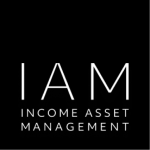Why there’s still strong value in the “5% club”
For a while we talked about the illustrious “6% club” – investment grade bonds that were issued with coupons of 6%+. This might not seem like a particularly big deal, however to those of us that endured the COVID years where you were more likely to encounter the 2% club, coupons exceeding 6% was definitely worth celebrating!
Perhaps the zenith of the market was Westpac’s 7.199% 2033c issue. That bond was issued around two years ago and the issue size was $1.5bn. Investors smart/lucky enough to secure some of that deal are currently sitting on a capital value of c.112, on top of a 7%+ income accrual. That gives a rough, back of the envelope, annualised return of 13%+. Not a bad outcome for an A- rated (investment grade) debt instrument in a Big 4 bank.
Recently we have seen investment grade issues from UBS, ANZ and EDF with 6%+ coupons. All of these have performed strongly in the secondary market however, these days, the investment grade market is looking a lot more like a “5% club”.
As much as I miss the “6% club”, investment grade bonds with yields in the 5%+ region still look very attractive on a historical basis. That assertion probably doesn’t shock you, given my role as a bond market acolyte for the last two decades, but let me put it into some context.
Take AGL Energy’s recent 10-year issue as a case in point. Initial price guidance was for a credit spread of +1.9% resulting in a coupon of 5.95%. You do not need to have had too much experience in the new issue market to know that when the orderbook closes, these numbers will be lower.
Overwhelming demand always puts the issuer in a strong position to tighten (lower) the coupon. In the case of AGL Energy, the orderbook was $3.17bn when it closed only three hours after it opened. Somewhat brutal dynamics when only $250m of bonds were issued. Final terms reflected a spread of +1.72% and a coupon of 5.77%. The chart below gives us a yardstick to help gauge whether this is good value or not.
The Chart Explained
The chart illustrates how underlying swap rates (dark blue bars) and credit spreads (light-blue bars) combine to form the key building blocks of corporate bond yields, in this case, the Average 10 yr BBB Yield. Using the lefthand scale we can see that this yield has moved in a range that bottomed around 2% in 2020 and peaked at around 7% in 2022. Currently the average is 5.43% – made up of the swap rate at 4.13% and the credit spread of 1.3%.
Using the right-hand scale, the pink line isolates the credit spread and is thus an easier gauge to identify the tightening /widening of spreads. The credit spread is tighter (lower) during benign market conditions, such as we are enjoying at present. Spreads widen (increase) at times of stress when investors are nervous/risk averse and therefore demand higher returns.
Credit spreads, for 10-year BBB rated bonds, are tight (expensive) when they are close to 1% and relatively wide (cheap) when they are above 2%.
So, does AGL Represent Good Value? Let’s break this down…
Swap Rate (light-blue)
The swap rate is driven by interest rate movements, meaning that it is at the higher end of the range for the past eight years. The overall yield benefits materially from the fact that the credit spread is being added to a swap rate that is just above 4%. This a level that it barely reached at all between 2018 – 2022.
Credit Spread
The credit spread of 1.72% for AGL is roughly in the middle of the range over the past c.8 years. Having said that, it is materially above the current average BBB credit spread of 1.3%.
Coupon
As a result of the swap rate (4.05%) + the credit spread (1.72%) we end up with a coupon for AGL of 5.77%. This is comfortably above 5.43%, which is the current average of its peers. It is also a very healthy level, only being exceeded during 2022 and the first half of 2023 (dotted blue line – left hand scale).
So AGL might have just missed out on the “6% club” however on a historical basis it still looks like very good value. I think some investors focus on the fact the average spreads are at the tight end of the range and lose sight of the fact that new issue credit spreads are wider and outright yields are attractive in a historical context. In addition, aside from the return, an issuer like AGL offers meaningful diversification benefits to portfolios that are often overweight financials.
To discuss, call us on
1300 784 132
Get in Touch
Please contact your IAM relationship manager if you have any questions or would like to discuss.

